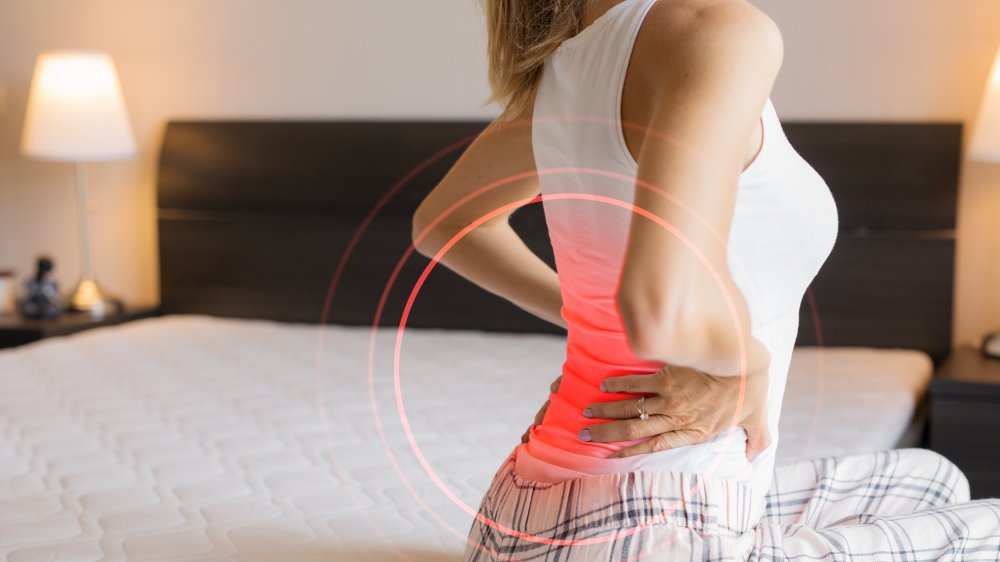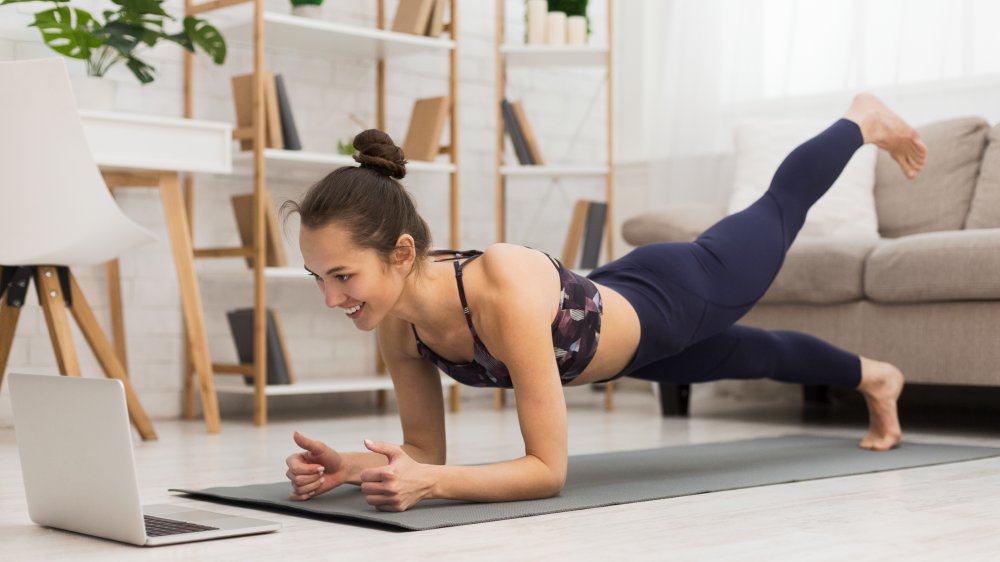Why You're Having More Aches And Pains Than Ever Before
If pandemic experts were handing out awards for best behavior, most of us would be at the head of the line. Sheltering in place? Check. Masks when you go outside? Check. Social distancing? Check. But while you've been doing just what the CDC ordered, another problem may have cropped up, and which has nothing to do with the coronavirus at all.
A survey of 2,000 Americans carried out by foot-care product manufacturer Dr. Scholl's shows that 50 percent of respondents say they are experiencing more aches and pains because of a decrease in physical activity during quarantine, while four in 10 admit they are achey because they sit around too much. Other factors, such as poor posture while working from home (36 percent), walking around the house barefoot (42 percent), or sitting in an uncomfortable chair (27 percent) have also contributed to the increase in aches and pains many of us might be feeling during this time (via South Florida Reporter).
The result of this survey shouldn't come as a surprise. Medical science has established a well-documented link between diminished physical activity and an increase in aches and pains. On its website, the CDC recommends physical activities, such as walking, biking, and swimming, in order to alleviate the effects of chronic pain, the ongoing kind that arthritis sufferers feel.
Aches and pains multiply when you're not moving enough
There are several reasons why movement is critical to pain management. In the case of arthritis sufferers for instance, Duke University professor Virginia Byers Kraus, who serves on the research and medical committee of the Arthritis Foundation, tells NPR: "Movement is essential for nutrition of the cartilage. Cartilage doesn't have a blood supply but does have living cells. "So the way it gets nutrition is by dynamic motion — putting weight off and on as you walk and move. The fluid inside the joint flows into and out of the cartilage like a sponge, so all the nutrients in the joint fluid get into the cartilage" and help slow any degradation there."
Duquesne University neuroscientist Benedict Kolber says there's another reason why we're less likely to feel achey when we're on the go. Movement and exercise activate parts of the brain that are responsible for making us feel less pain. Even better? "There are some circumstances in which your body can produce so much of these natural opioids that you actually get some sense of euphoria," Kolber tells NPR.
Luckily, there are plenty of options for a stay-at-home exercise routine – or even simply take a daily walk around your block can help get your body feeling better.

